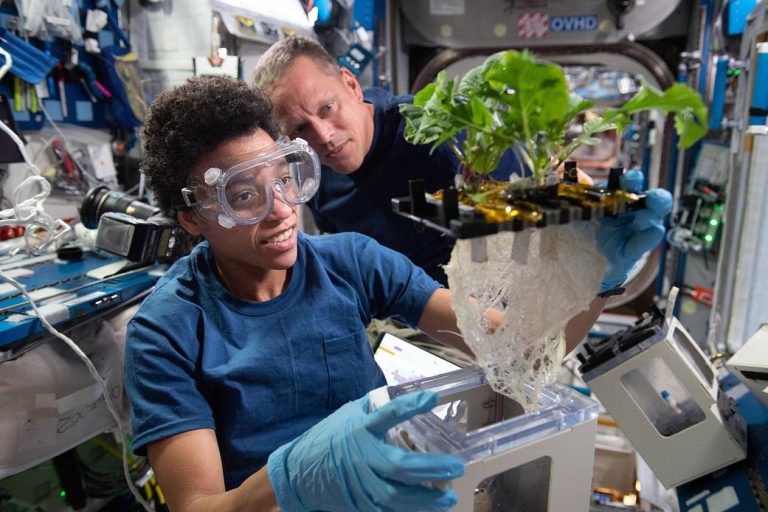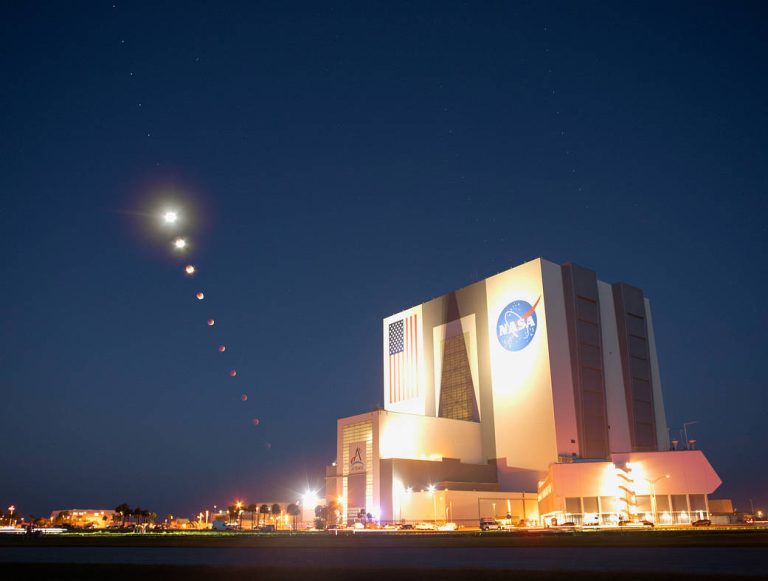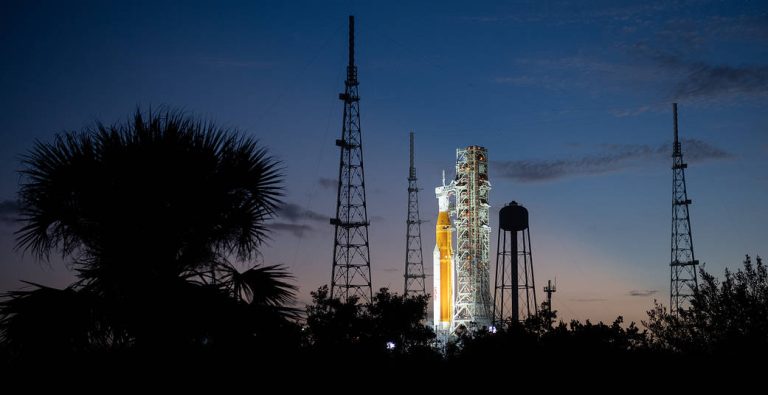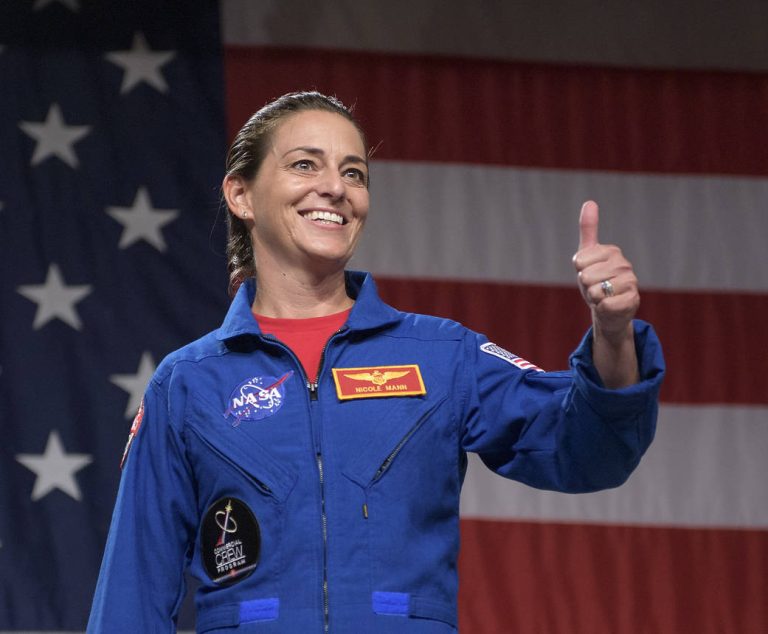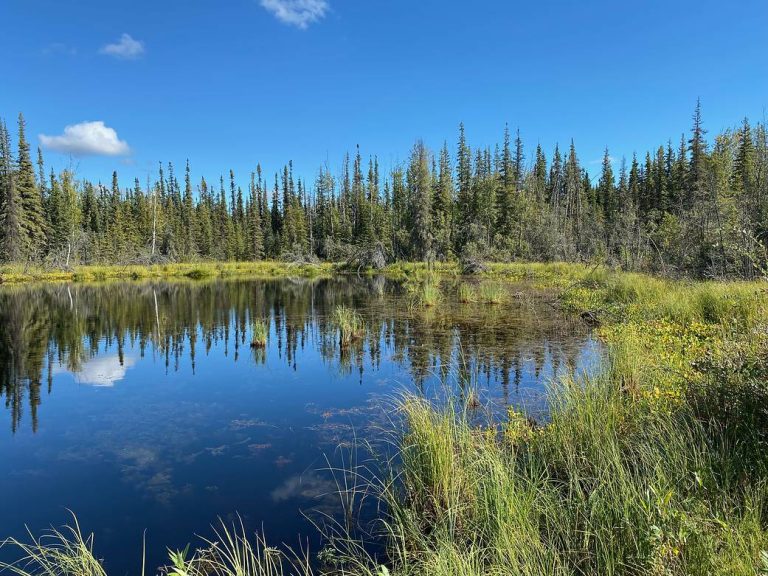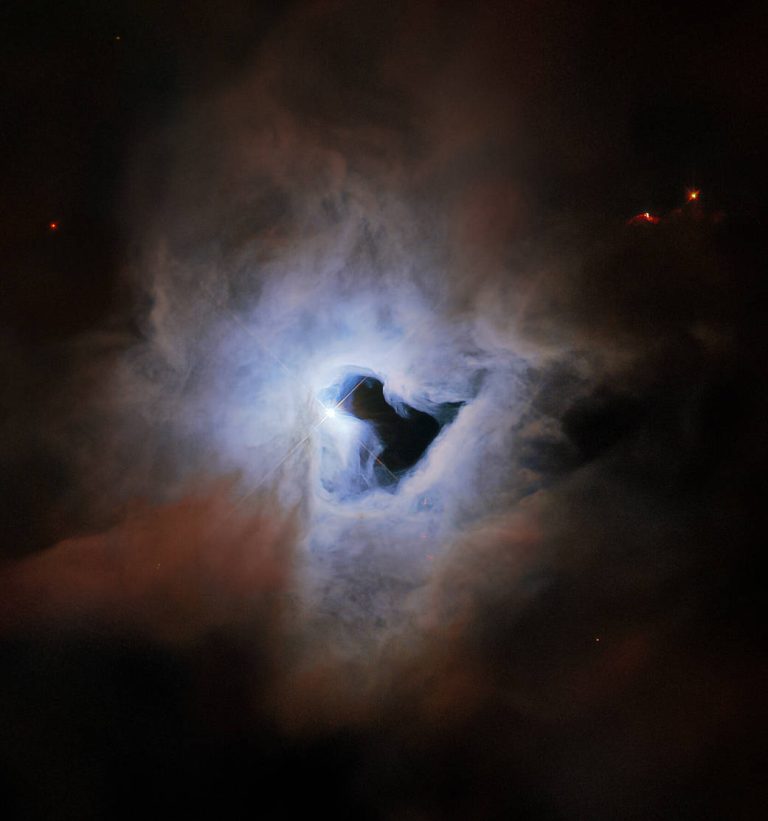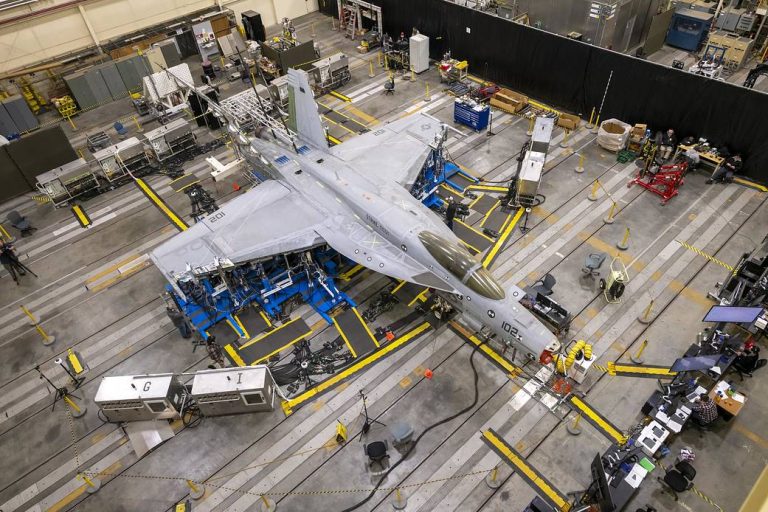NASA肯尼迪航天中心月光下的发射准备工作
The Moon is seen rising above NASA’s Space Launch System (SLS) rocket with the Orion spacecraft at Launch Pad 39B as preparations for launch continue, Monday, Nov. 14, 2022, at NASA’s Kennedy Space Center in Florida. Launch of the uncrewed flight test is targeted for no earlier than Nov. 16 at 1:04 a.m. EST. Coverage begins with cryogenic fueling of the SLS at 3:30 p.m. EST on Nov. 15; launch coverage begins at 10:30 p.m. EST on Nov. 15. NASA’s Artemis I flight test is the first integrated test of the agency’s deep space exploration systems: the Orion spacecraft, SLS rocket, and supporting ground systems. Image Credit: NASA/Bill Ingalls 2022年11月14日星期一,在佛罗里达州的NASA肯尼迪航天中心,月球在NASA的太空发射系统(SLS)火箭上方升起,猎户座飞船在39B发射台继续进行发射准备工作。无人飞行测试的发射时间定在不早于美国东部时间11月16日凌晨1:04。报道从美国东部时间11月15日下午3点30分SLS的低温燃料补给开始;发射报道从美国东部时间11月15日晚上10:30开始。 NASA的阿尔忒弥斯1号飞行测试是NASA深空探测系统的首次综合测试:包括猎户座飞船、SLS火箭和支持地面系统。 图片来源:NASA/Bill Ingalls




